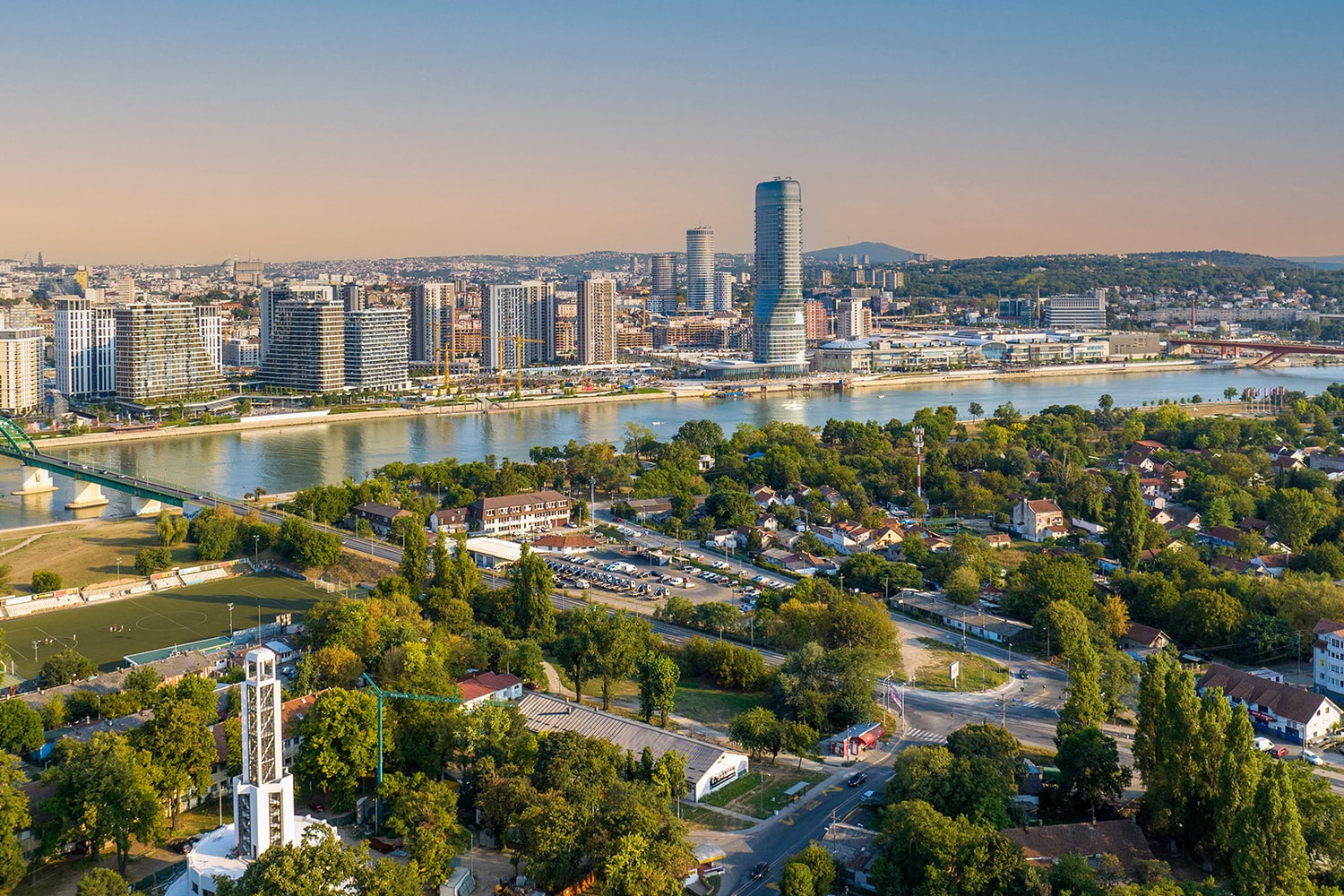Belgrade is the capital of Serbia and one of the oldest and most interesting cities in Europe. It is located at the crossroads of two rivers, the Danube and the Sava, and its history spans over 2000 years. The city has endured numerous wars, conquests, and changes of rulers, but each event has left its mark on its culture and architecture. Belgrade is an important cultural, economic, and historical center of the Balkans, attracting tourists and travelers from around the world. Here are some fascinating facts about Belgrade that will give you a fresh perspective on this unique city.
- Belgrade is one of the oldest cities in Europe, with a history spanning over 2000 years. The city was founded during Roman times and has since become an important trading and cultural center, experiencing influences from various cultures and rulers.
- The name “Belgrade” translates from Serbian as “White City.” This name likely originates from the white walls that once covered the city’s fortress during Roman times.
- One of the most famous landmarks in Belgrade is the Belgrade Fortress, built on the site of ancient Roman fortifications. This strategically important site is a symbol of the city, and from its walls, visitors can enjoy a panoramic view of the Danube and Sava rivers.
- Belgrade is located at the intersection of two rivers, the Danube and the Sava, which has made the city an important trading port and cultural center. The Sava River plays a significant role in the life of the city, and its waterfront is a popular spot for walking and relaxation.
- The city was the capital of Yugoslavia and later Serbia, which has given it significant political importance. Belgrade also serves as an important center for international relations, hosting numerous conferences and high-level negotiations.
- One of the main cultural centers of the city is the National Museum, which houses unique archaeological finds and works of art that showcase the history and culture of the city and the region.
- In Belgrade stands one of the largest Orthodox churches in the world, the Church of Saint Sava. Construction of the church began in the late 19th century and was completed only in the 2000s. This building is a symbol of the city and an important religious center for Serbs.
- Belgrade is famous for its nightlife. The city is home to numerous clubs, bars, and restaurants that offer live music, dancing, and great entertainment. It is a place where life doesn’t stop, whether it’s day or night.
- Belgrade also has many green spaces and parks. One of the most popular and largest parks is the Borisova Gradina, which is a favorite resting place for both locals and tourists. Here you can walk, engage in sports, or simply enjoy nature.
- Belgrade is an important cultural center, where numerous theatrical and musical festivals take place. The Ivan Vazov National Theatre and other cultural institutions attract artists and audiences from around the world.
- The city has many historical buildings and streets that provide a glimpse into the life of the city across different epochs. Walking through the Old Town, you can see elements of Roman, Byzantine, and Ottoman architecture, which makes the city especially interesting for tourists.
- Belgrade is also known for its exquisite cuisine, which blends Balkan, Ottoman, and European influences. Popular dishes such as ćevapi, sarma, and moussaka are an integral part of the daily diet for the city’s residents.
- Belgrade is home to one of the largest universities in the Balkans, the University of Belgrade, which is an important educational and scientific center. This institution attracts students and researchers from around the world.
- Belgrade plays a significant role in cinematography. The city has become an important center for hosting international film festivals, including the Belgrade International Film Festival, which attracts filmmakers and movie lovers from all over the world.
- The city is famous for its many historical cafés, which have become true cultural hubs. One of the most famous is “Caffé Tommaseo,” which opened in the late 19th century and has become a favorite spot for both locals and tourists.
- Belgrade is an important economic center. In recent years, the city has been rapidly developing, with new residential complexes, shopping centers, and improved infrastructure, making it a key economic hub for Serbia and the surrounding region.
These interesting facts about Belgrade highlight the richness and diversity of this city. Belgrade is not only the capital of Serbia, but also a city with a rich history, cultural heritage, and modern spirit. The fascinating facts about this city help us appreciate its cultural and economic significance, as well as see how various cultures and eras intertwine in this unique city. Belgrade is a city worth exploring, and every visitor will find something special for themselves.





